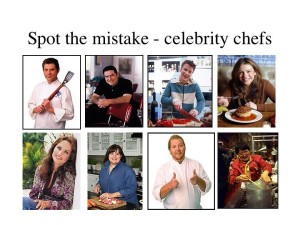A spike in food poisoning cases has been linked to South Australians undercooking eggs at home.
The new cases have sparked warnings from health authorities to be wary of attempting techniques used on television cooking shows.
SA Health figures show 353 cases of potentially life-threatening salmonellosis have been reported throughout the state so far this year. That is about a third more than the number of cases – 267 – reported at the same time last year.
 About 15 per cent of cases this year were hospitalised.
About 15 per cent of cases this year were hospitalised.
SA Health director of food safety and nutrition Dr Fay Jenkins said that while raw chicken and other meat can lead to salmonella poisoning, undercooked eggs were believed to be responsible for the recent increase.
“Millions of eggs are eaten each week,” she said. “It’s the exposure we have to eggs. There is nothing that has linked these cases to a restaurant or anything like that.
“We believe it is linked to the handling of eggs at home.”
Dr Jenkins warned against using such techniques as the 60/60 method of cooking eggs at a lower temperature of 60C for the longer timeframe of 60 minutes, a method featured on the inanely boring television cooking show, My Kitchen Rules.
How about cross-contamination or the ritualistic use of raw eggs in many Australian restaurants? You’ve heard it from Dr. Jenkins. It’s up to you, Australian consumers.
I habitually ask if the aioli or mayo is made at a restaurant using raw eggs, and then don’t touch it. But I don’t eat out that often anymore.
A table of raw egg related outbreaks in Australia is available at https://barfblog.com/wp-content/uploads/2014/03/raw-egg-related-outbreaks-australia-3-3-14.xlsx.
Spot the mistake: Television cooking shows as a source of food safety information
01.may.04, Mathiasen, L.A., Chapman, B.J., Lacroix, B.J. and Powell, D.A., Food Protection Trends 24(5): 328-334
Consumers receive information on food preparation from a variety of sources. Numerous studies conducted over the past six years demonstrate that television is one of the primary sources for North Americans. This research reports on an examination and categorization of messages that television food and cooking programs provide to viewers about preparing food safely.
During June 2002 and 2003, television food and cooking programs were recorded and reviewed, using a defined list of food safety practices based on criteria established by Food Safety Network researchers. Most surveyed programs were shown on Food Network Canada, a specialty cable channel.
On average, 30 percent of the programs viewed were produced in Canada, with the remainder produced in the United States or United Kingdom. Sixty hours of content analysis revealed that the programs contained a total of 916 poor food-handling incidents. When negative food handling behaviors were compared to positive food handling behaviors, it was found that for each positive food handling behavior observed, 13 negative behaviors were observed.
Common food safety errors included a lack of hand washing, cross-contamination and time-temperature violations. While television food and cooking programs are an entertainment source, there is an opportunity to improve their content so as to promote safe food handling.
